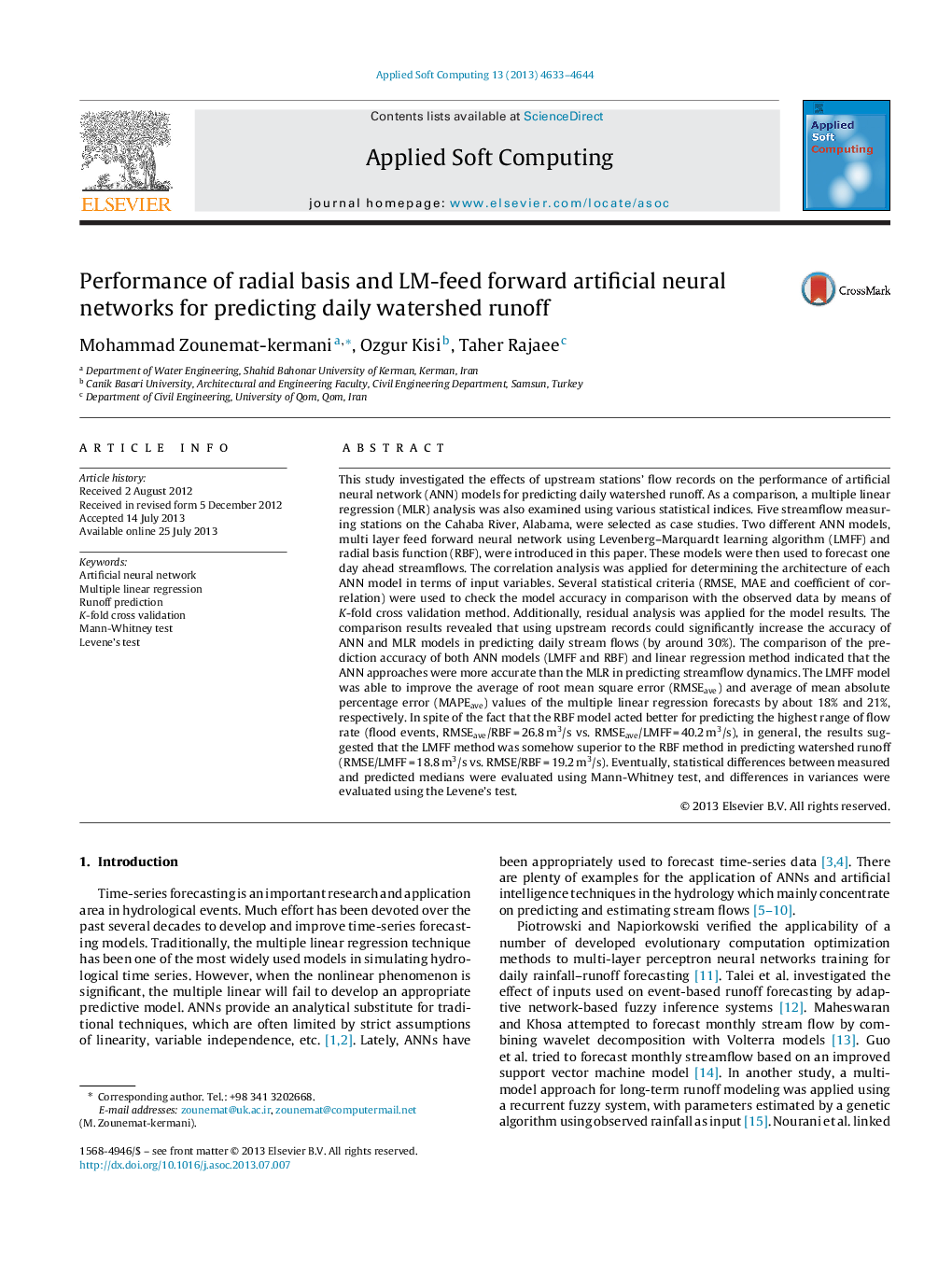| کد مقاله | کد نشریه | سال انتشار | مقاله انگلیسی | نسخه تمام متن |
|---|---|---|---|---|
| 495677 | 862833 | 2013 | 12 صفحه PDF | دانلود رایگان |

• ANN models provided more accurate predictions compared with the MLR model.
• Using upstream records could significantly increase the accuracy of ANN and MLR models.
• LMNN model is superior to RBF for base and high flow.
• RBF model is superior to LMNN model for simulating flood events.
• The applied models under-predicted the flow rates.
This study investigated the effects of upstream stations’ flow records on the performance of artificial neural network (ANN) models for predicting daily watershed runoff. As a comparison, a multiple linear regression (MLR) analysis was also examined using various statistical indices. Five streamflow measuring stations on the Cahaba River, Alabama, were selected as case studies. Two different ANN models, multi layer feed forward neural network using Levenberg–Marquardt learning algorithm (LMFF) and radial basis function (RBF), were introduced in this paper. These models were then used to forecast one day ahead streamflows. The correlation analysis was applied for determining the architecture of each ANN model in terms of input variables. Several statistical criteria (RMSE, MAE and coefficient of correlation) were used to check the model accuracy in comparison with the observed data by means of K-fold cross validation method. Additionally, residual analysis was applied for the model results. The comparison results revealed that using upstream records could significantly increase the accuracy of ANN and MLR models in predicting daily stream flows (by around 30%). The comparison of the prediction accuracy of both ANN models (LMFF and RBF) and linear regression method indicated that the ANN approaches were more accurate than the MLR in predicting streamflow dynamics. The LMFF model was able to improve the average of root mean square error (RMSEave) and average of mean absolute percentage error (MAPEave) values of the multiple linear regression forecasts by about 18% and 21%, respectively. In spite of the fact that the RBF model acted better for predicting the highest range of flow rate (flood events, RMSEave/RBF = 26.8 m3/s vs. RMSEave/LMFF = 40.2 m3/s), in general, the results suggested that the LMFF method was somehow superior to the RBF method in predicting watershed runoff (RMSE/LMFF = 18.8 m3/s vs. RMSE/RBF = 19.2 m3/s). Eventually, statistical differences between measured and predicted medians were evaluated using Mann-Whitney test, and differences in variances were evaluated using the Levene's test.
Figure optionsDownload as PowerPoint slide
Journal: Applied Soft Computing - Volume 13, Issue 12, December 2013, Pages 4633–4644